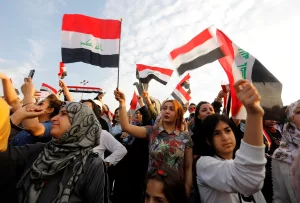On April 15 at 9 a.m., a flight departed from southern Saudi Arabia (KSA) and arrived in Yemen’s capital city of Sana’a. 120 passengers were on the flight, yet it is the type of people aboard that is significant, rather than the number. These passengers were 120 Houthi rebels who had been held by Saudi Arabia as prisoners of war. As such, the plane’s arrival was the first step in a Yemeni and Saudi prisoner swap. The Houthi prisoner exchange would see various more flights and a total of 887 people free.
Background
The exchange is a sign that the countries are close to a peace settlement, and the end of an eight-year war. In 2015, the Republic of Yemen was struck with a coup d’etat. The government was failing to beat the rebels called Houthis, a Shiite group determined to overthrow the Sunni government. To avoid the takeover and restore the original government, Saudi Arabia intervened. This began the war that plagues the country today. Confident that they could beat the Houthis and restore Yemen’s government within weeks, Saudi Arabia and their coalition began “Operation Decisive Storm.” This coalition included North and West African countries, as well as support from numerous actors in the West.
Yet 9,000 civilian Yemeni deaths and eight years later, the Saudi-led war continues. The Iran-backed Houthis have flown over 1,000 missiles and hundreds of drones into KSA. Despite the Yemeni government, Saudi Arabia and their coalition, and the West’s efforts, the rebels continue to have a strong hold over the country. The United Arab Emirates retreated from the alliance in 2019, claiming that the war was at a “stalemate.” Now, KSA’s goals have clearly shifted; they are more interested in leaving Yemen than overthrowing the Houthis. Nevertheless, for Yemen, the end of one conflict will likely mean the beginning of another.

Image by SWP.
The consequences of peace
Without the coalition in the picture, the Houthis will likely become Yemen’s new government. With the world’s worst humanitarian crisis, however, they will face a daunting challenge. Over 80% of the country lives off of foreign aid, much of which has been stolen by Houthis in the past. Schools have become institutions of indoctrination and child labor is rampant. More than 100,000 people died of starvation or diseases between 2015 and 2020 alone. In addition, rebels in the South want an independent Southern region, and militias in the West and South-East want autonomy. Many of these factions had conflicting ideologies but united to fight off the Houthis. Without the disappearance of their common cause, they will likely turn on each other. The end of this conflict is a positive sign, but it may simply be the start of another.
Causes of the exchange
Still, the end of the conflict may be a symptom of a larger change in the Middle East. The fighting has reduced significantly since the two sides signed a brief truce last April. This agreement officially expired after six months, yet both sides have continued to uphold it until now. Furthermore, Iran and Saudi Arabia met in Beijing to sign a Chinese-brokered deal in March. Shia-majority Iran and Sunni-majority Saudi Arabia severed diplomatic relations seven years ago, following a number of disagreements between the two powers. The countries’ clashes then spread into other territories, including Lebanon, Syria, Iraq and Yemen. Nevertheless, the Beijing deal led both countries to announce the reopening of embassies in Tehran and Riyadh.
This rapprochement occurred in March, around a month before the prisoner swap took place. KSA has even backed Syria’s (an ally of Iran) reentrance into the Arab League, which it was suspended from 10 years ago. Back then, Saudi Arabia was one of the strongest forces pushing the country out of the League. Today, it is Saudi Arabia who supports Syria coming back; a sign that Riyadh is improving its relationship with the Iranian ally. It thus comes as no surprise that both sides are taking steps to end their conflict in Yemen.
The humanitarian crisis in Yemen has left 30 million people in immediate danger. With this prisoner exchange by Saudi Arabia and Houthi rebels, it seems as though there is finally light at the end of the tunnel. KSA and Iran’s involvement in Yemen is slowing down, and their tying of diplomatic relations is speeding up. Yet Yemen and its new government will face other challenges that they may have failed to anticipate. While the two giants of the Middle East makeup, it is likely that this war-torn country will be left to fend for itself. The light at the end of the tunnel, it seems, is in the Persian Gulf, not in Yemen.
Cover photo by: VOA News






